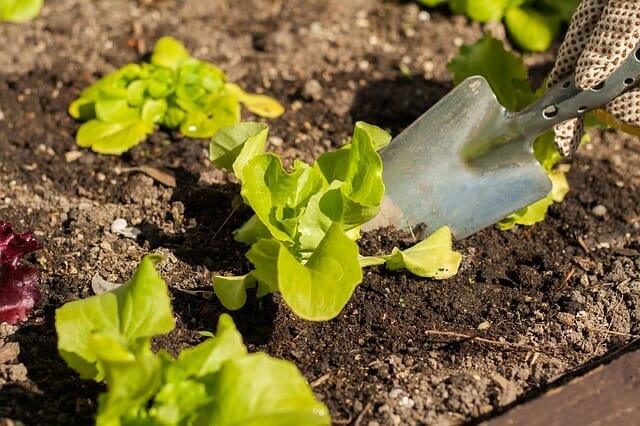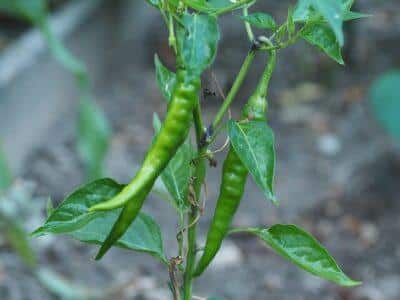While some of us are used to dealing with drought, nature keeps the rest of us guessing. My gardening zone has a short, hot growing season with extremely variable amounts of annual precipitation. Some years, we have drought; other years, it’s so wet that root vegetables rot in the ground. It’s not possible to plan for all contingencies. Instead, we try to roll with the punches and manage weather conditions as they happen.
Drought — for all its difficulties — is actually one of the easier weather conditions to address. For city slickers with small gardens, it may be as simple as turning on an outdoor faucet. But, for those with larger gardens, those in rural areas, or those who just don’t want to see their water bills balloon, there are several tricks to help your garden flourish with minimal water during hot, dry weather.
1. Apply mulch
Applying a 3-4 inch layer of mulch around your plants is one of the best things you can do during a drought. Deep mulching can reduce water requirements by up to 50 percent. Mulch has several benefits, including:
- It keeps the soil cool, providing a barrier to evaporation and helping soil retain moisture better.
- Plants rooted in cool soil will be less affected by the heat above ground and will perform more vigorously.
- Mulch inhibits weed growth; weeds are major competitors for available moisture.
As an added benefit, organic mulch provides nutrients for the soil as it breaks down. Many mulches are free or low cost and can be collected in your own yard or your neighbor’s yard (with permission!). Try using straw, pine needles, tree bark, grass clippings, leaves, wood chips or newspaper.
2. Apply compost
The rich, spongey nature of compost makes it a natural for retaining water. How much water it can hold depends both on the type of compost and on the soil. Michigan State University reports that “a 3-inch layer of leaf compost rototilled to a 6-inch depth increased the water holding capacity 2.5 times that of a native sandy soil.”
Looking For Non-GMO Herb Seeds? Get Them From A Company You Can Trust!
In other words, leaf compost holds onto water 2.5 times longer than sandy soil does, keeping moisture available to plants for a longer period of time. In ideal, temperate conditions, vegetable plants need one inch of water per week. But with compost-amended soil, watering could be decreased to every second week, or even a bit less.
3. Stay on top of weeding
I know some people enjoy weeding, but I’m not one of them. Still, it needs to get done. Weeds soak up moisture and nutrients from the soil — moisture and nutrients that your vegetable plants need. The application of deep mulch, as suggested above, will help control weeds; but if you can’t mulch your vegetables, make sure to remove the weeds one way or another.
4. Create windbreaks and shade
Temporary structures can provide your vegetable plants and soil with shade and relief from hot winds, which will help the soil retain moisture. Consider creating and/or installing things such as:
- A vertical fabric screen, made by stapling burlap or shade cloth to stakes driven into the ground.
- A temporary fence-like structure of securely propped pallets.
- An overhead canopy, made from shade cloth and any improvised side supports.
- Row cover hoops refitted with burlap or shade cloth.
- Prefab lattice sheets installed vertically.
Shade fabric comes in different grades. Those that have about 50 percent coverage will provide shade while also letting needed sunlight through.
5. Be water smart
Use available water wisely. Here are some tips:
- There’s no need to water your garden on a regular basis. Instead, keep an eye on your plants; they will tell you when they need water. All plants wilt in excessive heat, but if your big-leaved plants (like melons and squash) are drooping during cool morning or evening hours, it’s time to water your entire garden.
- Collect and reuse greywater, rainwater and/or wastewater (such as from kiddie pools).
- Water your garden in the early morning (preferable) or late afternoon.
- Use a drip irrigation system (ideally) or soaker hoses instead of a sprinkler.
- Water deeply and irregularly so that your plants grow long, strong roots to seek water deep beneath the surface.
- Make trenches or reservoirs around the base of plants or at the edge of beds to collect runoff water in an area where roots can reach it.
It’s easy to feel helpless when faced with drought conditions, particularly if water reserves are scarce and/or rationed. But you can help your plants survive — and even thrive — by using some of the ideas above.
Do you have any other tips to help vegetable plants manage drought? If so, please tell us in the comments below.
 Off The Grid News Better Ideas For Off The Grid Living
Off The Grid News Better Ideas For Off The Grid Living





